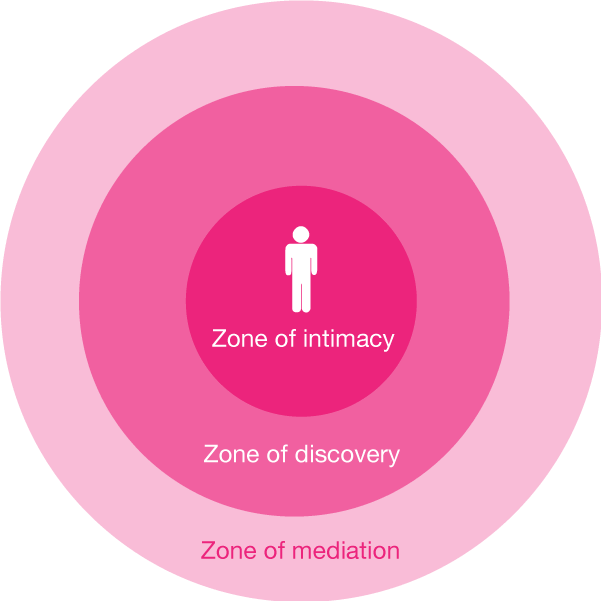Tools and frameworks
Zones of Brand Perception activation tool


The three zones
-

Zone of intimacy. Here brand contact is sensory, voluntary and direct. The brand is there because the consumer wants it to be and its sensorial qualities – taste, colour, fragrance, feel, sound, weight, atmosphere – are strongly perceived and noted, subliminally if not consciously. ‘Intimate’ means exactly that: the product might well end up inside the person (drink, snack, analgesic) or the person might well end up inside the product (hotel, aircraft, car). Whatever the precise conditions, there is a vividness to these self-selected, intimate brand contacts that is stronger than in the other two zones.
-

Zone of discovery. Here the brand is not expected to be part of the moment and contact comes as more of a surprise – when the brand pops up in a magazine article, for example, or in an impromptu conversation, or perhaps where a branded van parks in the neighbourhood. In this zone the mind is open and the guard is down; contact might be less direct than in the centre zone, but is made vivid – for good or bad – by virtue of its surprise.
-

Zone of mediation. Here the brand is perceived indirectly, through a medium. This is where we find advertising, direct mail, digital marketing, sales calls and most of the ordnance of classically defined marketing communications. In this zone the mind is rarely open and the guard is invariably up. Contact is made diffuse not just by the intervention of the medium, but by lack of interest, or even cynicism, felt by the consumer towards yet another commercial message. There is still scope for vividness, but it is much harder to achieve than in the other two zones, requiring creative and media ideas of sufficient ingenuity to penetrate the haze of indifference.
An example complete framework for a product/service brand

How the tool helps brand activation
Many marketers spend most of their lives influencing decisions in the outer zones – working with agencies in mediated communications campaigns and directing digital and social initiatives. The Zones of Brand Perception methodology forces marketers to reverse that habit – to start in the centre, where the brand is potentially most vivid, identify what is currently there, probe each touchpoint for its expression of the desired brand positioning, and work imaginatively to create new ones that will bring the positioning to life where it matters most.